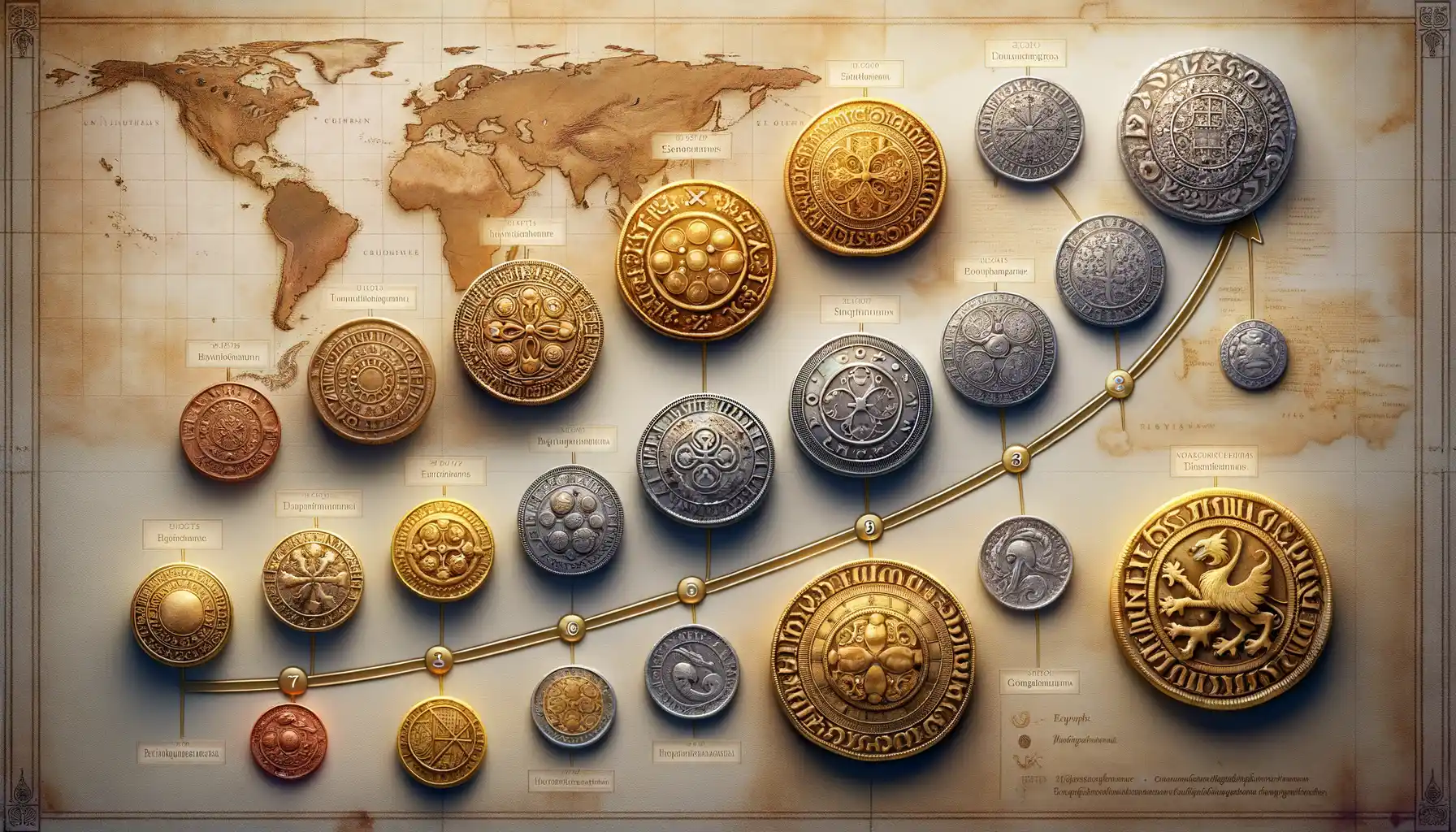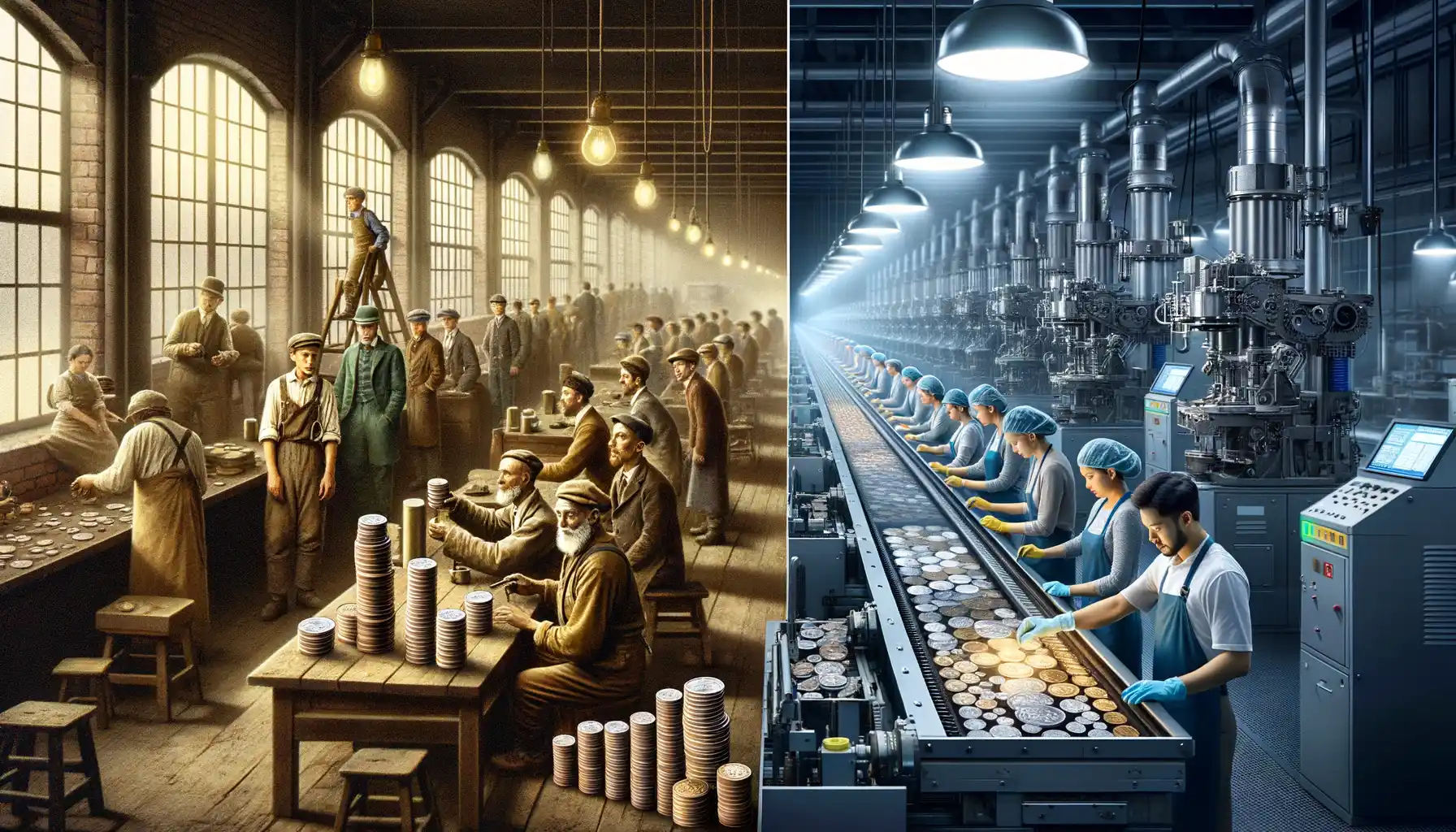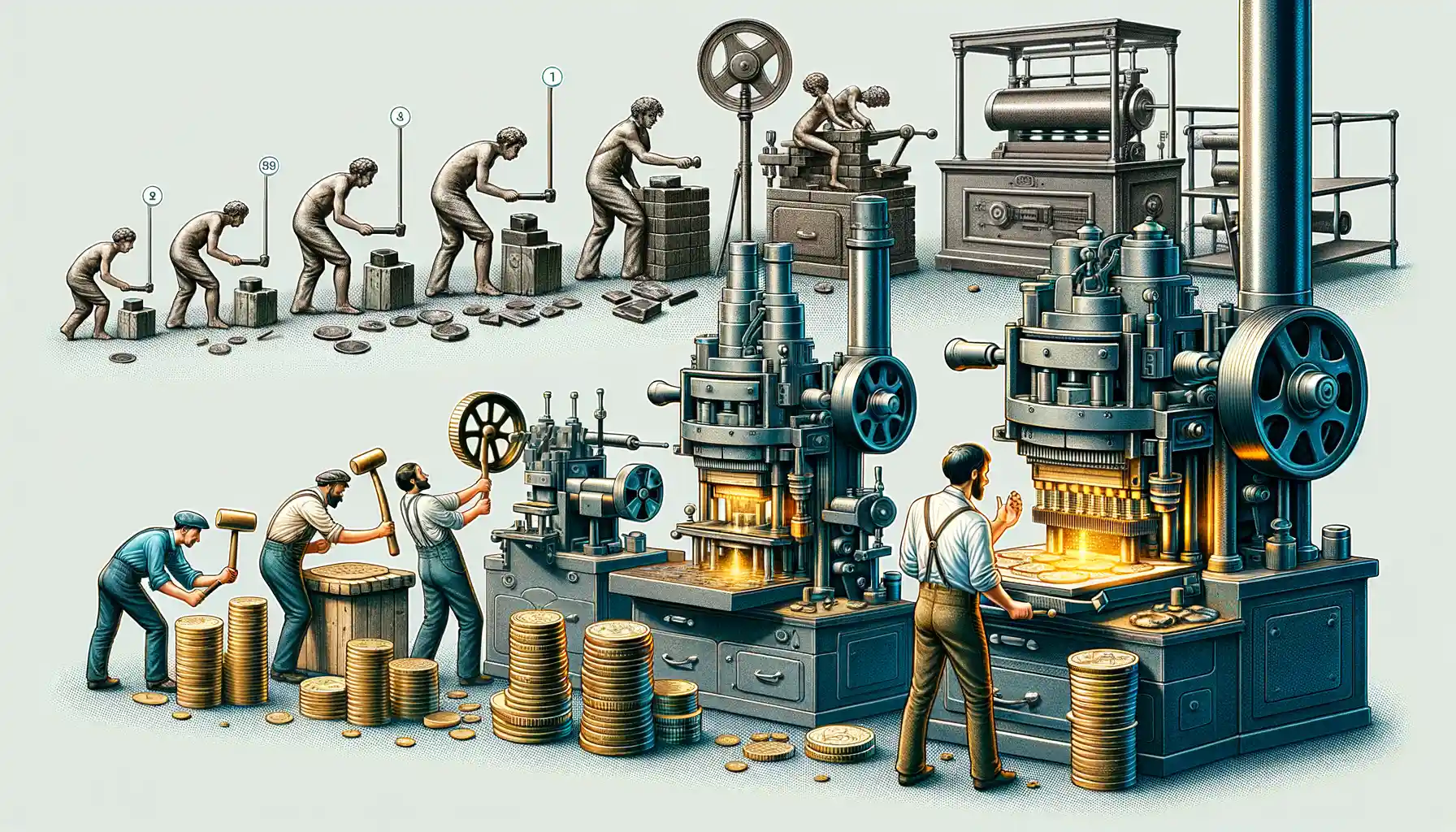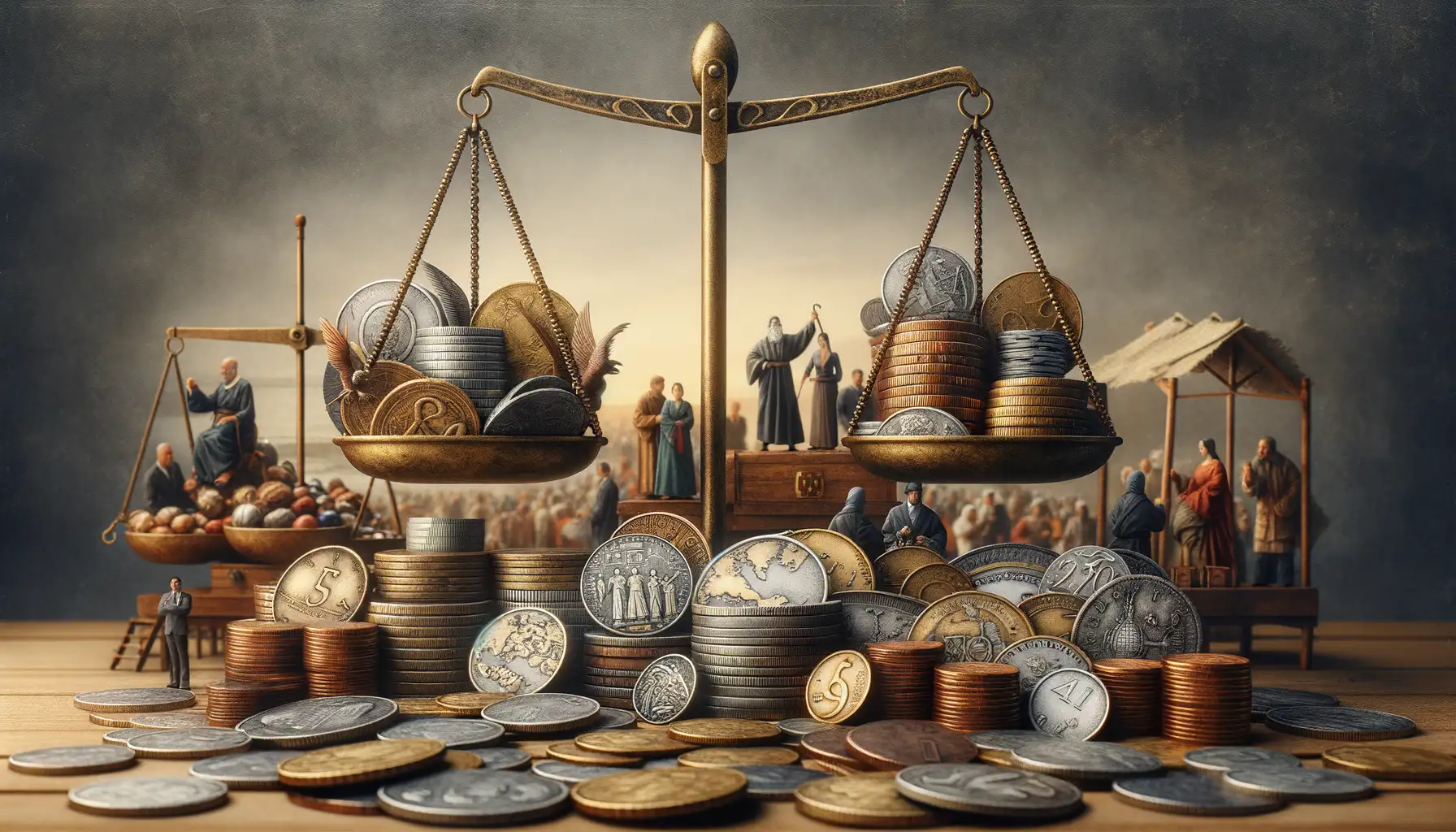The Origins of Coin Minting in Ancient Civilizations
The Spark That Ignited Coin Minting
Imagine life in ancient civilizations: bustling marketplaces filled with traders bartering goods, artisans showcasing their wares, and farmers proudly offering fresh harvests. But let’s pause—how did they agree on the value of what was exchanged? Enter the ingenious solution that changed everything: the invention of minted coins.
The first glimmers of this idea appeared in Western Anatolia (modern-day Turkey) around 600 BCE. The kingdom of Lydia, under the rule of King Alyattes, struck something revolutionary: coins made of an alloy called electrum—a natural mix of gold and silver. These early masterpieces weren’t just functional; they were works of art, stamped with symbolic designs like lions and bulls, meant to denote power and trustworthiness. It’s as if every coin told a small but mighty story.
Why Ancient Coins Were More Than Just Money
To the ancients, coins weren’t merely tools of trade; they were badges of pride, symbols of identity, even political propaganda. Here’s why they mattered:
- Power Representation: Rulers minted their faces or emblems to cement authority across vast regions.
- Trust in Trade: Coins ensured fairness with standardized weights and known material value—no more shady deals!
- Artistry Beyond Measure: From Greek gods to mythical creatures, these coins carried intricate designs that reflected culture and belief.
Picture it: a merchant clutching a palmful of stamped Lydian coins, each glowing faintly in the sun. These weren’t just currency; they were innovation, trust, and art melded into one remarkable invention.
The Evolution of Coinage Through the Middle Ages

A Medieval Turning Point: From Bartering to Sophistication
The Middle Ages were a time of transformation, and coins became more than just a tool for trade—they became symbols of identity, power, and prestige. Picture this: bustling medieval markets where merchants haggled under fluttering banners. The clink of coins exchanged hands, but unlike their ancient counterparts, these coins bore intricate designs, like fierce lions or noble kings, meant to dazzle the eye and assert authority.
Europe saw a revolution in coinage during this time. The rise of feudal kingdoms meant rulers minted their own coins to exert control over their realms. Some coins, such as the English silver penny, were so meticulously crafted they were used for centuries. Meanwhile, trading hubs like Venice issued highly sought-after coins like the golden ducat, famed for its reliability and purity.
- Embossed artistry: Coins now featured detailed engravings, from Biblical scenes to royal seals.
- Standardization: Weights and metal purity gradually unified markets across regions.
Isn’t it fascinating how something so small could wield so much influence? By the High Middle Ages, coins had evolved into much more than shiny objects—they carried the story of an era in their very metal.
The Dark Side: Counterfeiting and Control
Of course, where there’s value, there’s deception. Medieval mints constantly battled counterfeiters who clipped coins or mimicked designs to cheat unwitting traders. Rulers enforced strict punishments to protect their economies, reflecting just how vital coinage had become to daily life.
And then, the Church stepped in. Coins often bore religious imagery, linking wealth to divine favor. Can you imagine carrying around a coin engraved with a saint’s image, believing it protected your fortunes? This intertwining of faith and currency created a deeply personal connection to money, making it more than just a medium of exchange—it was an emblem of trust and belief.
The Industrial Revolution and Modern Coin Manufacturing

Forging the Future: Coins in the Age of Steam and Steel
The Industrial Revolution didn’t just bring steam engines roaring through valleys or factories churning out textiles—it sparked nothing short of a revolution in how coins were minted. Before this era, minting was a labor-intensive process involving manual striking. Imagine workers hammering dies onto metal blanks one by one. It was painstaking and imprecise! But then came the machines, and the minting world would never be the same.
With the invention of powerful steam-driven presses, like those designed by Matthew Boulton in the late 18th century, coins suddenly became both faster to produce and more consistent in design. These presses could strike up to 100 coins per minute—an unimaginable leap from manual methods. For the first time, mass production entered the world of currencies.
- Precision: Intricate patterns and anti-counterfeiting features became feasible.
- Efficiency: A single steam press could outperform entire teams of manual workers.
Picture it—gleaming coins, rolling off machines like clockwork, each one identical yet uniquely tied to its era. This mechanization laid the foundation for modern mints, where science and artistry collide in astonishing harmony.
Technological Advances in Contemporary Minting Processes

The Art and Precision Behind Modern Minting
Imagine holding a coin fresh from the mint—its gleaming surface alive with intricate designs and symbols. What you may not realize is that today’s minting process is a symphony of technology and artistry working in harmony. Gone are the days of hammering by hand; now, machines so precise they’d impress a surgeon take the stage.
For instance, laser engraving has transformed the way designs come to life on coins. With pinpoint accuracy, lasers etch incredibly fine details onto metallic blanks, creating textures and images that catch light in the most dazzling ways. The level of detail? Think microscopic patterns visible only under magnification, yet felt by your fingertips like Braille. This is craftsmanship elevated by science.
Key Innovations in Today’s Coinage Process
But what truly sets contemporary minting apart? Let me take you behind the curtain with some game-changing breakthroughs:
- Smart presses: High-speed presses can churn out over 750 coins per minute, each one perfect. Compare that to ancient mints where producing a single coin could take hours.
- Anti-counterfeiting wizardry: Hidden microtexts, holographic surfaces, and even UV layers make modern coins harder to fake than ever before.
Even the metals themselves tell a story. Today’s mints often employ eco-friendly alloys for durability while reducing environmental impact. It’s innovation meeting sustainability—a blend of progress that truly shines in your pocket.
The Cultural and Economic Significance of Minted Coins

Coins as Symbols of Power and Identity
Minted coins are far more than just shiny hunks of metal; they’re miniature storytellers. Every impression stamped onto a coin – from the stern profile of an emperor to the delicate curve of a wheat stalk – carries cultural weight. In ancient Rome, coins weren’t just economic tools; they were propaganda in your pocket. A newly minted coin bearing the face of a ruler wasn’t subtle: it declared, “This is your leader. Remember their power every time you spend a denarius.”
Similarly, coins have long been used to celebrate identity. Think of how the humble Irish harp graces modern euro coins, reminding the world of Ireland’s deep musical heritage. Or how the buffalo on the U.S. nickel nods to the wild, untamed spirit of the American frontier. These designs connect people to their roots, sparking pride with every jangle of loose change.
- They preserve history: Coins are durable, outlasting paper currency and often becoming cherished artifacts.
- They unite communities: Shared symbols build a sense of belonging and national pride.
- They carry a message: Coins can honor heroes, holidays, or pivotal moments in time.
The Economic Pulse of Everyday Life
Beyond their artistic and cultural significance, coins have always been silent workhorses of economies. Picture a bustling medieval market. Merchants bartering spices, fabrics, and grain relied on coins for fairness and efficiency. A silver penny meant trust—a universal promise that goods exchanged held equal value. Even today, coins play an understated but vital role in local commerce. From parking meters to vending machines, they’re the underrated heroes of the cash economy.
And let’s talk about savings jars! Those jangling glass jars filled with copper pennies and nickels aren’t just charming household relics. They represent hope, discipline, even small dreams. Saving for an ice cream cone, a toy car, or a rainy-day fund starts—literally—with the clink of a coin. The sheer physicality of coins connects us to money in a way digital transactions never could.
So, next time you hold a coin in your hand, don’t just see its surface. Feel the centuries of history, the stories, and the lives it has touched.